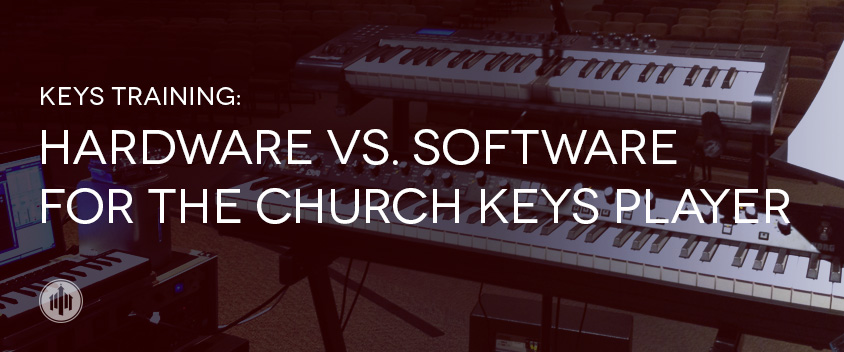
The synthesis and sampling technology of today has been making leaps and bounds more than ever before. In the context of musical worship, there is a great debate for the keys player. This debate is the one of between the use of hardware or software.
As an avid keyboardist and sound designer, I have had the pleasure of working with numerous plug-ins, DAWs, synthesizers, and other noise makers. In the context of the worship keyboardist, there are many pro’s and con’s of both, but also many advantages and disadvantages. I would like to elaborate on a few of those. Note: this article is not meant to favor or talk down any item or piece of software, but I hope it gives the reader insight on which could be better for their situation.
Software sound quality has been blowing the minds of a lot keyboard players. Piano samples in particular are becoming widely used over full size grand pianos. Native Instruments, Synthogy, Imperfect Samples, are just a few of the developers that are taking the reigns on developing and selling incredible piano samples that give so much more control than one has ever thought possible for a piano sound.
On the other hand, companies such as Korg, Nord, and Roland, big names in the hardware industry, are also putting up stage pianos and workstations that have some of the most beautiful piano patches on the market today. I the synthesis side of things, there are many decisions to be made.
The Korg Triton is a staple keyboard that everyone has heard of. It has famous patches used by a multitude of famous artists. The pad called Analog Velvet found in the Triton has been used in many Hillsong albums and live concerts. In recent years, companies such as Nord with the Lead series has developed exceptional synthesizers full of amazing sounds and companies such as Moog still are top notch analog and hybrid synthesizers.
In the software realm, plug-ins are not only sounding better and better, but coming down considerably in price as we’ll. Spectrasonics Omnisphere has 1000s of patches that can cover every sonic idea you may have. Other companies such as Propellerhead and Native Instruments have made massive headway in synthesis plug-ins that offer hands on control for those knob twisters with the ability to recall anything that you have ever made in an instant. Let’s not forget programs like Mainstage, that for 30 dollars offers great sounds for the person who wants to get into keyboard playing with the software side in mind.
So how do you pick what you need? Always think in context. Do you have one keyboard player? Are you working with volunteers? Do you need to build a library of sounds? Do you have multiple keys positions?
Hardware is able to be straightforward for those who just need to sit down and play. Some may have a dedicated “piano player” that may not need software next to the. The Korg SV1 or Nord Electro HP series could be a great option offering on board sounds with a “push and play” mentality.
Some may need to cover more sounds than just the bread and butter, but volunteers don’t have time to always program patches in their week before service. As leaders, we can develop sounds for our teams into a program like Mainstage. and have it ready to go when the volunteer gets there. Great sounds, with very minimal operational learning curve. With the internet these days you can find tutorials everywhere to help further your knowledge on all these things, but remember to use context to justify what you need. Ask yourself, “what will be the purpose of this?”
If you have any questions, please feel free to leave them in the comment section!

